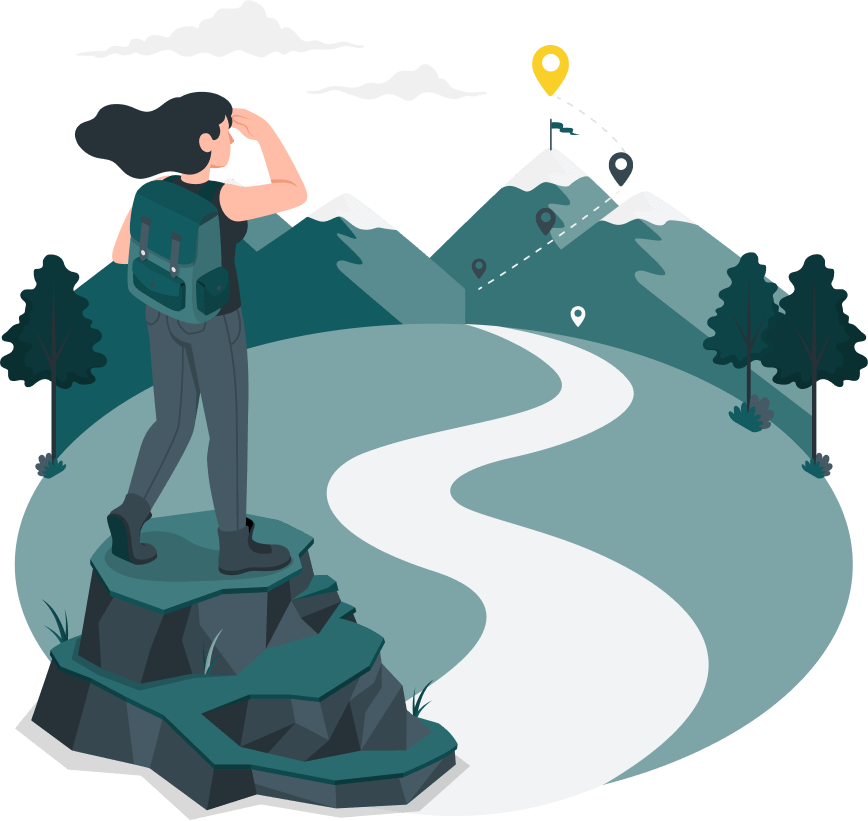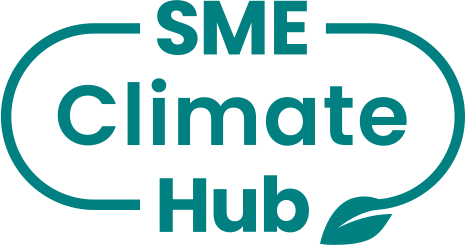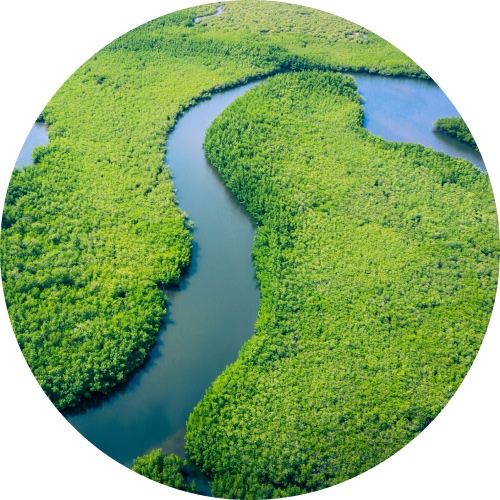Se de steg ditt företag kan ta mot en mer hållbar framtid genom våra öppna resurser.
Calvium's Climate Report
Introduction *
Commitment And Targets *
Own emissions *
Value chain emissions *
(optional)Actions and plans to reduce emissions *
Climate Solutions *
(optional)Management and strategy *
(optional)Results, challenges and outlook *
Introduction *
reporting year
*2022
number of employees in the reporting year
*18
Commitment And Targets *
net zero target year
*2025
Base year
*2020
comment on your net zero targets
*To be net zero by 2025
near-term scope 1 target
*100
target year
*2025
near-term scope 2 target
*60
target year
*2025
near-term scope 3 target
*-
target year
*2025
comment on your near-term targets
*To reach net zero by 2025
Own emissions *
scope 1 emissions
scope 1 emissions (metric tons co2e)
*0.0
own facilities
*N/A
own vehicles
*N/A
own processes
*N/A
scope 2 emissions
scope 2 emissions (metric tons co2e)
*119.22
total energy consumption (kwh)
*824
renewable energy
*100
purchased electricity
*118.66
metric tons CO2eRenewable electricity (%)
100
purchased steam
*N/A
Renewable electricity (%)
-
purchased heating
*N/A
Renewable electricity (%)
-
purchased cooling
*N/A
Renewable electricity (%)
-
Value chain emissions (optional) *
scope 3 emissions
scope 3 emissions (metric tons co2e)
*164.3777
supply chain related - upstream emissions
purchased goods and services
*N/A
capital goods
*N/A
fuel and energy related activities
*N/A
transportation and distribution (upstream)
*N/A
waste in operations
*N/A
business travel
*N/A
employee commuting
*164.3777
metric tons CO2eleased assets (upstream)
*N/A
customer related - downstream emissions
transportation and distribution (downstream)
*N/A
processing of sold products
*N/A
use of sold products
*N/A
end-of-life treatment of products
*N/A
leased assets (downstream)
*N/A
franchises
*N/A
investments
*N/A
describe the calculation methodology and comment on accuracy:
*We used the Distance-based method, which involves collecting data from employees on commuting patterns (e.g., distance travelled and mode used for commuting) and applying appropriate emission factors for the modes used.
Actions and plans to reduce emissions *
Scope 1 Actions
own facilities
N/A
-
own vehicles
N/A
Previously spoke to employees about the electric car scheme but at the moment this isn't something we feel we will be going ahead with.
own processes
N/A
-
scope 2 actions
purchased electricity
Yes
We use an Eco electricity company, our office isn't used as much since COVID so amount of electricity used has reduced. We are currently looking at options to get rid of our office and use an alternative office, more of a hybrid work place.
purchased steam
N/A
N/A
purchased heating
N/A
Heating is through who we went our office from
purchased cooling
N/A
-
scope 3 actions
supply chain related (upstream)
purchased good and services
*Yes
Our approved supplier process requires details on supplier sustainability and carbon reduction policies
capital goods
*N/A
n/a
fuel and energy related activities
*N/A
n/a
transportation and distribution (upstream)
*N/A
n/a
waste in operation
*N/A
-
business travel
*Yes
A lot of our meetings are virtual. We recommend public transport
employee commuting
*Yes
Not many people come into the office, if they do they use the bus (electric) or walk
upstream leased assets
*N/A
-
customer related (downstream)
transportation and distribution (downstream)
*N/A
Distribution of our software products and services is virtual/online
processing of sold products
*N/A
-
use of sold products
*N/A
-
end-of-life treatment of products
*N/A
-
leased assets (downstream)
*N/A
-
franchises
*N/A
-
investments
*N/A
-
i have asked my suppliers to halve emissions before 2030 and join the un-backed race to zero campaign
*Yes
percentage (%) of suppliers asked
*-
percentage (%) of suppliers committed
*-
i have communicated my commitment and actions to my business customers and asked them to join the un race to zero
*Yes
percentage (%) of business customers asked
*100
Percentage (%) of business customers committed
*-
Climate Solutions (optional) *
What percentage of your total revenue comes from sales of climate solutions?
*70
Provide descriptions/names of your climate solutions:
*Envirocrops SAFinity
Methodology used to assess these as climate solutions:
*Envirocrops - Part of The Biomass Feedstocks Innovation Programme - a £36 million programme, funded through the Department for Energy Security and Net Zero’s £1 billion Net Zero Innovation Portfolio, which aims to accelerate the commercialisation of innovative clean energy technologies and processes through the 2020s and 2030s. https://safinity.net/ Sustainable Aviation Fuels Purchase SAF, Deliver SAF to Airports to replace Jet-A1 fuel Carbon Reduction Programs
How much of your research and development budget is allocated to climate solutions?
*10
are you investing in climate and/or nature outside your value chain?
*Yes
provide details of the project/s you invest in:
*Climate social responsibility, e.g. tree planting
how are they quality secured?
*https://www.bristol.gov.uk/residents/museums-parks-sports-and-culture/parks-and-open-spaces/trees-and-meadows/one-tree-per-child
which value do they represent (in usd)?
*N/A
Management and strategy (optional) *
Results, challenges and outlook *

Calvium's Climate Report
Calvium's Climate Report - 2022
Introduction *
reporting year
*2022
number of employees in the reporting year
*18
Commitment And Targets *
net zero target year
*2025
Base year
*2020
comment on your net zero targets
*To be net zero by 2025
near-term scope 1 target
*100
target year
*2025
near-term scope 2 target
*60
target year
*2025
near-term scope 3 target
*-
target year
*2025
comment on your near-term targets
*To reach net zero by 2025
Own emissions *
scope 1 emissions
scope 1 emissions (metric tons co2e)
*0.0
own facilities
*N/A
own vehicles
*N/A
own processes
*N/A
scope 2 emissions
scope 2 emissions (metric tons co2e)
*119.22
total energy consumption (kwh)
*824
renewable energy
*100
purchased electricity
*118.66
metric tons CO2eRenewable electricity (%)
100
purchased steam
*N/A
Renewable electricity (%)
-
purchased heating
*N/A
Renewable electricity (%)
-
purchased cooling
*N/A
Renewable electricity (%)
-
Value chain emissions (optional) *
scope 3 emissions
scope 3 emissions (metric tons co2e)
*164.3777
supply chain related - upstream emissions
purchased goods and services
*N/A
capital goods
*N/A
fuel and energy related activities
*N/A
transportation and distribution (upstream)
*N/A
waste in operations
*N/A
business travel
*N/A
employee commuting
*164.3777
metric tons CO2eleased assets (upstream)
*N/A
customer related - downstream emissions
transportation and distribution (downstream)
*N/A
processing of sold products
*N/A
use of sold products
*N/A
end-of-life treatment of products
*N/A
leased assets (downstream)
*N/A
franchises
*N/A
investments
*N/A
describe the calculation methodology and comment on accuracy:
*We used the Distance-based method, which involves collecting data from employees on commuting patterns (e.g., distance travelled and mode used for commuting) and applying appropriate emission factors for the modes used.
Actions and plans to reduce emissions *
Scope 1 Actions
own facilities
N/A
-
own vehicles
N/A
Previously spoke to employees about the electric car scheme but at the moment this isn't something we feel we will be going ahead with.
own processes
N/A
-
scope 2 actions
purchased electricity
Yes
We use an Eco electricity company, our office isn't used as much since COVID so amount of electricity used has reduced. We are currently looking at options to get rid of our office and use an alternative office, more of a hybrid work place.
purchased steam
N/A
N/A
purchased heating
N/A
Heating is through who we went our office from
purchased cooling
N/A
-
scope 3 actions
supply chain related (upstream)
purchased good and services
*Yes
Our approved supplier process requires details on supplier sustainability and carbon reduction policies
capital goods
*N/A
n/a
fuel and energy related activities
*N/A
n/a
transportation and distribution (upstream)
*N/A
n/a
waste in operation
*N/A
-
business travel
*Yes
A lot of our meetings are virtual. We recommend public transport
employee commuting
*Yes
Not many people come into the office, if they do they use the bus (electric) or walk
upstream leased assets
*N/A
-
customer related (downstream)
transportation and distribution (downstream)
*N/A
Distribution of our software products and services is virtual/online
processing of sold products
*N/A
-
use of sold products
*N/A
-
end-of-life treatment of products
*N/A
-
leased assets (downstream)
*N/A
-
franchises
*N/A
-
investments
*N/A
-
i have asked my suppliers to halve emissions before 2030 and join the un-backed race to zero campaign
*Yes
percentage (%) of suppliers asked
*-
percentage (%) of suppliers committed
*-
i have communicated my commitment and actions to my business customers and asked them to join the un race to zero
*Yes
percentage (%) of business customers asked
*100
Percentage (%) of business customers committed
*-
Climate Solutions (optional) *
What percentage of your total revenue comes from sales of climate solutions?
*70
Provide descriptions/names of your climate solutions:
*Envirocrops SAFinity
Methodology used to assess these as climate solutions:
*Envirocrops - Part of The Biomass Feedstocks Innovation Programme - a £36 million programme, funded through the Department for Energy Security and Net Zero’s £1 billion Net Zero Innovation Portfolio, which aims to accelerate the commercialisation of innovative clean energy technologies and processes through the 2020s and 2030s. https://safinity.net/ Sustainable Aviation Fuels Purchase SAF, Deliver SAF to Airports to replace Jet-A1 fuel Carbon Reduction Programs
How much of your research and development budget is allocated to climate solutions?
*10
are you investing in climate and/or nature outside your value chain?
*Yes
provide details of the project/s you invest in:
*Climate social responsibility, e.g. tree planting
how are they quality secured?
*https://www.bristol.gov.uk/residents/museums-parks-sports-and-culture/parks-and-open-spaces/trees-and-meadows/one-tree-per-child
which value do they represent (in usd)?
*N/A
Management and strategy (optional) *
Results, challenges and outlook *
Not sure how to start?
See the steps you can take and get help building a plan to cut your business emissions today.
¿No estás seguro de por dónde empezar?
Revisa los pasos que puedes dar y obtén ayuda para elaborar un plan para reducir las emisiones de tu empresa hoy mismo.
لست متأكداً كيف تبدأ؟
اطلع على الخطوات التي يمكنك اتخاذها واحصل على المساعدة في وضع خطة لخفض انبعاثات شركتك اليوم.
Vous ne savez pas par où commencer ?
Découvrez les mesures que vous pouvez prendre et obtenez de l’aide pour élaborer un plan pour réduire les émissions de votre entreprise dès aujourd’hui.
Osäker på hur du ska börja?
Se vilka steg du kan ta och få hjälp med att utforma en plan för att minska dina företagsutsläpp idag.
Ready to commit to lower emissions?
It’s easy to make the commitment. Just complete a form sharing your intent to reduce your emissions.
You’ll earn public recognition for taking the first step.
¿Listo para comprometerte a reducir tus emisiones?
Es fácil comprometerse. Solo tienes que completar un formulario compartiendo tu intención de reducir tus emisiones.
Ganarás reconocimiento público por tomar este primer paso.
هل أنت مستعد للالتزام بتقليل الانبعاثات؟
الالتزام سهل. ما عليك سوى تعبئة نموذج لمشاركة عزمك على تقليل انبعاثاتك.
سوف تحظى باعتراف عام باتخاذك الخطوة الأولى.
Prêt à vous engager pour réduire les émissions ?
S’engager est simple. Il suffit de remplir un formulaire indiquant votre intention de réduire vos émissions.
Vous gagnerez une reconnaissance publique pour avoir fait le premier pas.
Redo att åta sig att minska utsläppen?
Det är enkelt att göra åtagandet. Fyll bara i ett formulär där du delar med dig av din avsikt att minska dina utsläpp.
Du kommer att få offentligt erkännande för att du tagit det första steget.
Register now to use our tools
Register now to use our tools

Håll dig uppdaterad!
Anmäl dig till vårt nyhetsbrev för att hålla dig uppdaterad med de senaste klimatutvecklingarna.
Logga in
Har du inget konto? Skapa konto för att få åtkomst till våra verktyg eller gör SME Climate Commitment
Logga in
Har du inget konto? Skapa konto för att få åtkomst till våra verktyg eller gör SME Climate Commitment
Logga in
Har du inget konto? Skapa konto för att få åtkomst till våra verktyg eller gör SME Climate Commitment
Glömt lösenord?
Vänligen ange din e-postadress. You will receive a link to create a new password via email.

 Go back
Go back

